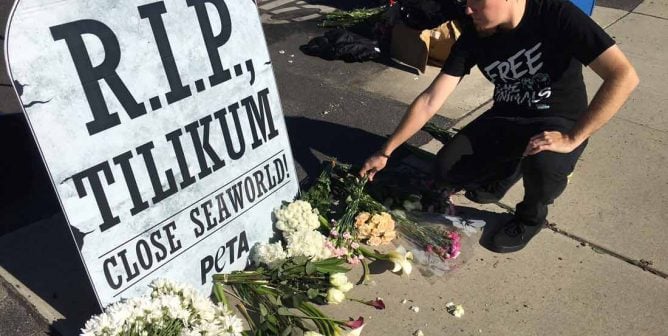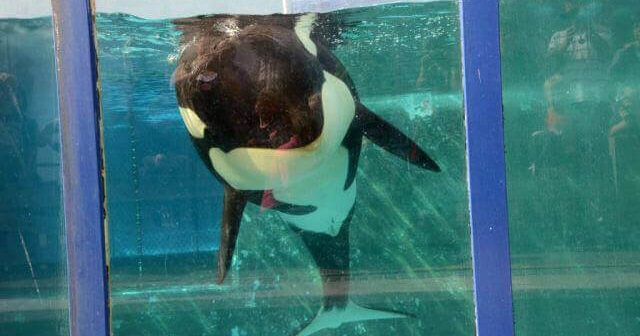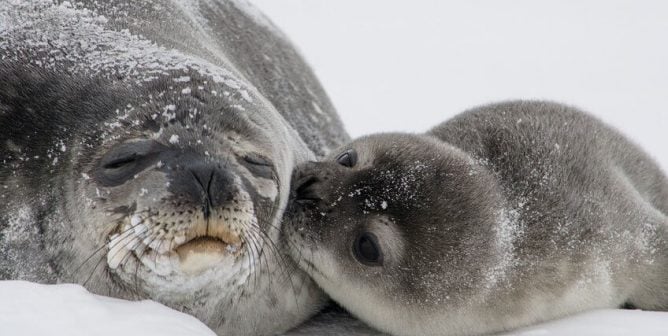Orcas Belong in the Ocean (Grades K-2)
This lesson plan is designed to help teachers present animal rights issues to their students. If you’re an educator, please feel free to adapt this material to fit your needs, and contact us if you need help incorporating this activity into your curriculum.
Suggested grade levels: K–2
Objectives
Affective: Students will be able to demonstrate an understanding of orcas as individuals and why it’s cruel to keep them imprisoned.
Cognitive: Students will be able to write informative/explanatory texts in which they name a topic, supply facts about the topic, and provide a sense of closure.
Background
Free-roaming orcas live in large, complex social groups and swim vast distances every day in the open ocean. When imprisoned, these animals can only swim in endless circles in tanks that are the equivalent size of bathtubs for humans, and they’re denied the opportunity to engage in almost any natural type of behavior. They’re forced to perform meaningless tricks, and many are torn away from family members when they’re shuffled between parks. While free-roaming male orcas live an average of 30 years and up to 60 and females an average of 50 and up to more than 100, 44 orcas have died on SeaWorld’s watch—at an average age of only 14. Not one has reached the maximum life expectancy of the species in nature.
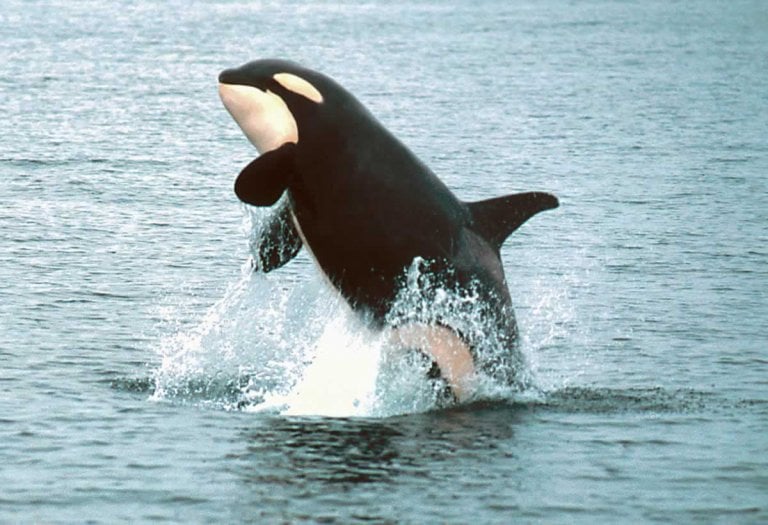
Materials
- Granny’s Clan: A Tale of Wild Orcas by Dr. Sally Hodson
- Informational writing graphic organizer (Kindergarten)
- Informational writing graphic organizer (grades 1-2)
Resources
Key Vocabulary
Free-roaming: having the freedom to travel; living in a natural state and not under human control
Echolocate: to use sound waves and echoes (sonar clicks) to determine where objects are in space
Clan: a group of close-knit and interrelated families
Motivation
Tell students that in order to help them understand the lesson, you’ll ask for six volunteers who will be separated into two equal-sized groups: “imprisoned” and “free-roaming.” The rest of the class should watch and listen closely for details about how each group lives. Then, use classroom furniture to confine the “imprisoned” group to one area of the room. Those in the “free-roaming” group should be allowed to walk around the classroom, talk to friends, and explore something new and interesting on the teacher’s desk (e.g., a toy). Give the “imprisoned” group members a low-interest vegan snack (e.g., plain, dry crackers). In contrast, allow the “free-roaming” group members to choose what food they want to eat from an assortment of high-interest vegan snacks (e.g., candy and cookies). Check out more vegan snack ideas here.
Then, discuss with students what they observed about the “imprisoned” group vs. the “free-roaming” group.
Ask them the following questions:
- How do you think the individuals in the “imprisoned” group felt?
- What makes you think that?
Then ask them these questions:
- How do you think the individuals in the “free-roaming” group felt?
- What makes you think that?
Ask students whether they’d rather be in the “imprisoned” group or the “free-roaming” group and to explain the reasons for their preference.
Before Reading
Remind students that a fact is a true statement about something that can be proved. Informational writing is a way that writers inform readers about a subject. In informational writing, we focus on presenting facts about a topic.
Tell students that now that they’ve learned the difference between “imprisoned” and “free-roaming,” the class will now read a book about an orca family. Explain that after the reading, you’ll ask them to write about the facts they’ve learned about orca families.
During Reading
Read aloud Granny’s Clan. Tell students to listen carefully for information that describes what an orca family is like and what the family members do together.
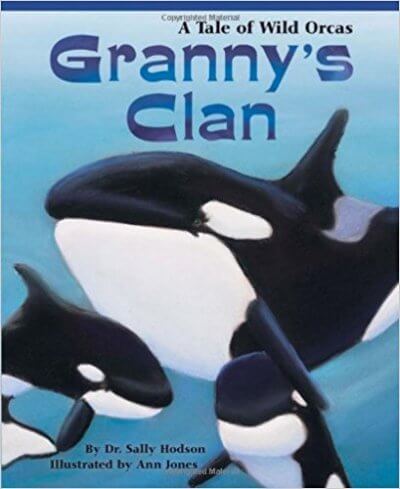
Pause to ask students some of the following questions throughout the reading to monitor their comprehension of the text. Chart student answers.
- Who is Granny? (an older orca)
- Who are the members of Granny’s family? (Samish, Mako, Ruffles, Suttles, Granny’s newborn great-grandchild)
- How do the orcas spend their time? (searching for food, playing, singing, communicating, resting, raising their young, traveling with their pod)
- Show students pages 12 to 13, where the orcas are interrupted by different types of boats while they’re playing. Ask students, “What kinds of boats came toward Granny’s family?” (sailboats, speedboats, ferries, fishing boats, tankers) and “Why might these boats be dangerous to Granny’s family?” (Boats can collide with whales, and too many boats can disturb their natural behavior patterns—such as their ability to feed, rest, and rear their young.)
- How do the noises of the boats affect the orcas? (The noise drowns out the family’s calls to each other.)
- How do the pictures help you understand how the orcas feel about each other? (They jump and splash for fun, Granny gives her great-grandchild a “gentle push,” they eat together, and they stay close to each other as they travel. .)
After Reading
Ask students, “How is Granny’s family similar to your family?” Encourage them to use the illustrations and/or text as evidence for their thinking.
Have students respond to the following prompt using the informational writing graphic organizer: Describe what orca families are like. Choose three key facts from the text to support your claim.
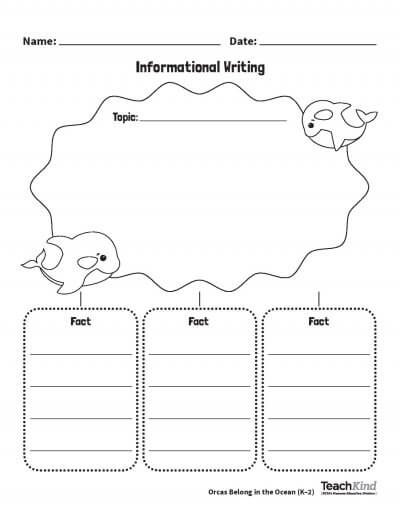
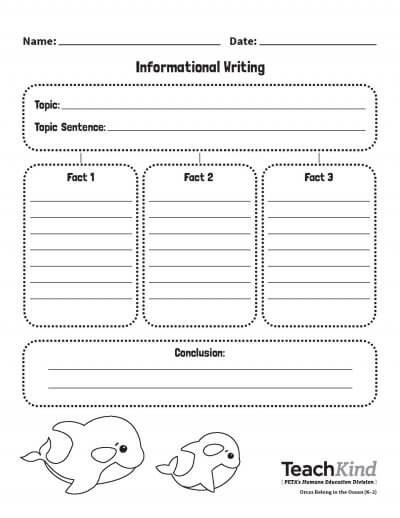
Real World Connection
Tell students that, just like humans, orcas can get lonely, sad, and depressed when they’re separated from their families. Show students the What It’s Like to Be an Orca at SeaWorld video.
Tell students that Granny, the orca from the story, was the matriarch (a female who is the head of a family) of the Southern Resident killer whales off the coast of Washington state. She lived to be over 100, and it’s likely that she was related to a wild-captured orca named Lolita, who was imprisoned at the Miami Seaquarium for more than five decades before she passed away. Show the students the picture below of Lolita as she was, and tell them her story:
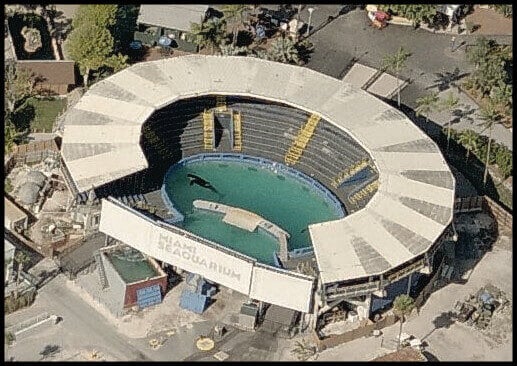
Lolita was taken from her family in the ocean when she was just 4 years old. She spent over 50 years at the Miami Seaquarium in the smallest orca tank in the United States. Her tank provided her with no shade from the hot Florida sun. With nothing else to do, Lolita spent most of her days just floating listlessly. She had no orca companions since 1980.
Plans to release Lolita to a seaside sanctuary were announced in March 2023, but she passed away in August 2023 before the plans were carried out.
Ask students, “What should have Lolita’s life been like?” Show them the picture below of where Lolita could’ve been (in the wild with her family).
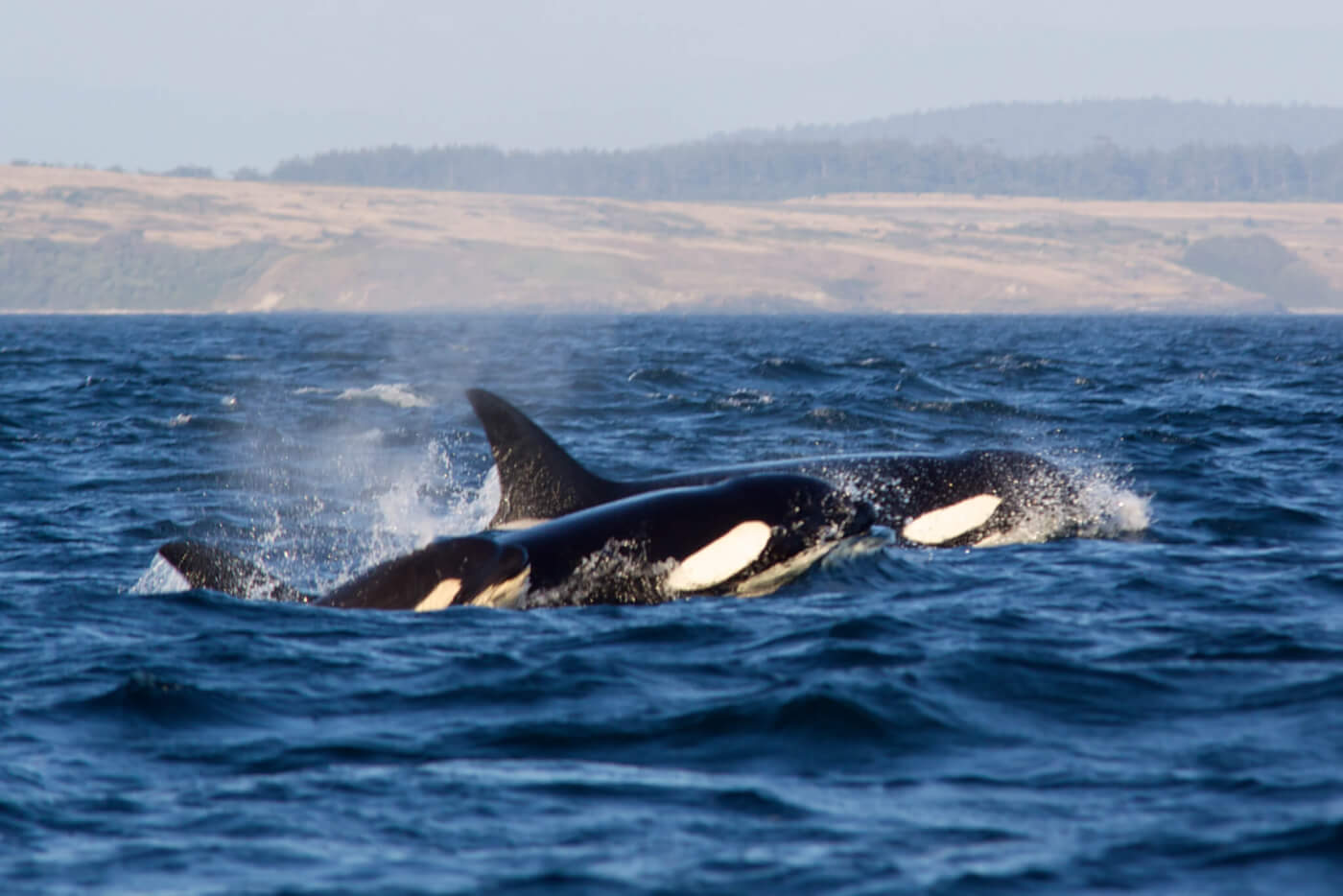
Ask students to draw a picture of the way that they believe Lolita should’ve been able to live (based on the facts that they learned from the book) on poster paper and ask them to include a caption describing their drawing.
Wrap Up
Have students share their posters with the class. Brainstorm as a class about ways to help orcas like Lolita (e.g., by not going to marine parks or petting zoo aquariums and by sharing with others the facts they’ve learned about orca families and why it’s important to them).
Assessment
Evaluate the students’ informational writing sheets, looking for three key facts about orcas, and evaluate their posters for how they believe Lolita should be allowed to live (based on facts from the text).
Common Misperception
Marine parks and shopping mall aquariums provide visitors with educational opportunities.
Reality
Marine parks such as SeaWorld, the Miami Seaquarium, and Canada’s Marineland are part of a billion-dollar industry that teaches people that it’s acceptable to imprison animals, deprive them of freedom of movement, forbid them the chance to establish natural territory and explore, breed and group them as we—not they—please, and watch them go insane from frustration and loneliness. The only thing that people learn from visiting a marine park is how miserable life is for the animals confined there. Children who visit the parks see mere shadows of animals, defeated beings who can’t engage in natural types of behavior or live as nature intended.
Extension
- Create a “Wall of Hope” in the hallway outside your classroom and hang students’ posters along with their pledges never to visit marine parks or shopping mall aquariums.
- Give each student an Orcas Belong in the Wild activity sheet to color and take home to discuss with his or her family.
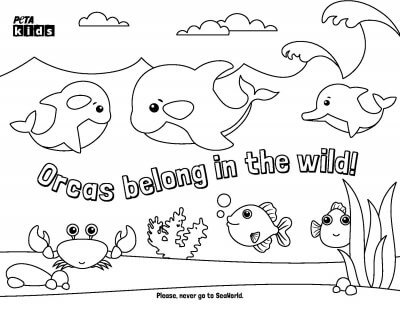
Common Core Standards Addressed
RL.K.1: With prompting and support, ask and answer questions about key details in a text.
RL.1.1: Ask and answer questions about key details in a text.
RL.2.1: Ask and answer such questions as who, what, where, when, why, and how to demonstrate understanding of key details in a text.
SL.K–2.1: Participate in collaborative conversations with diverse partners about grade-level topics and texts with peers and adults in small and larger groups.
W.K.2: Use a combination of drawing, dictating, and writing to compose informative/explanatory texts in which they name what they are writing about and supply some information about the topic.
W.1.2: Write informative/explanatory texts in which they name a topic, supply some facts about the topic, and provide some sense of closure.
W.2.2: Write informative/explanatory texts in which they introduce a topic, use facts and definitions to develop points, and provide a concluding statement or section.
Additional Resources
Common Core Standards: © Copyright 2010. National Governors Association Center for Best Practices and Council of Chief State School Officers. All rights reserved.


